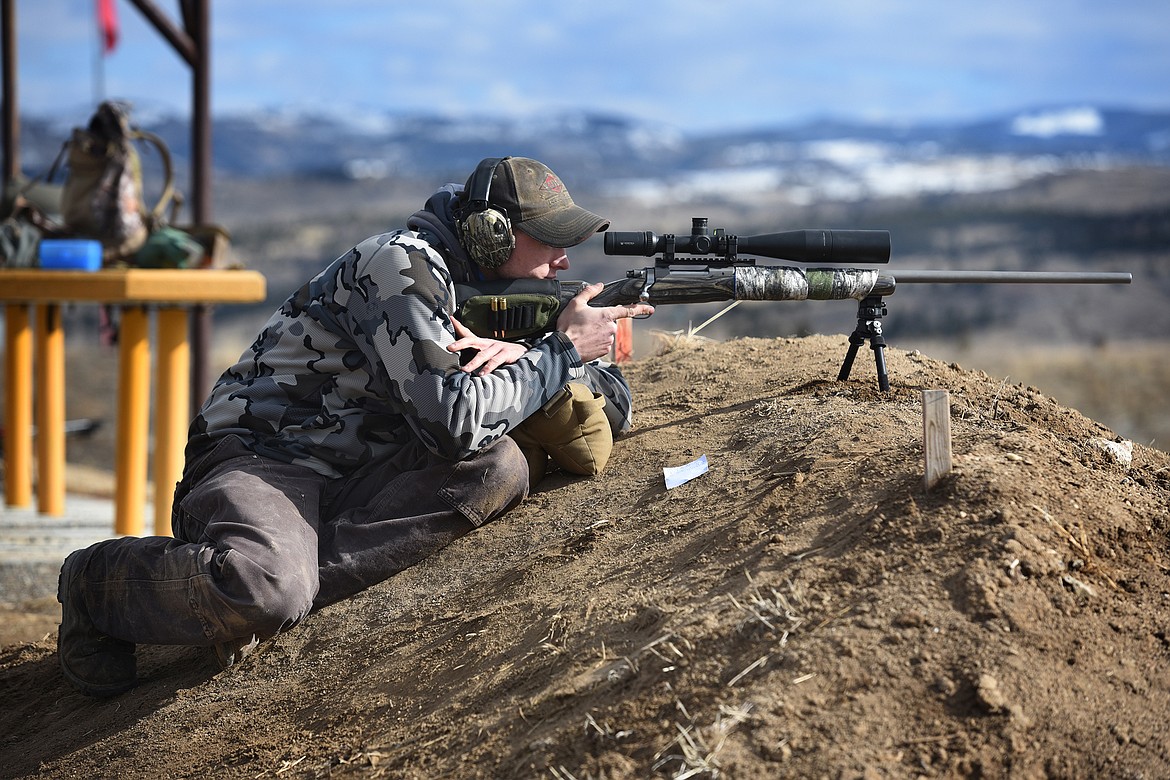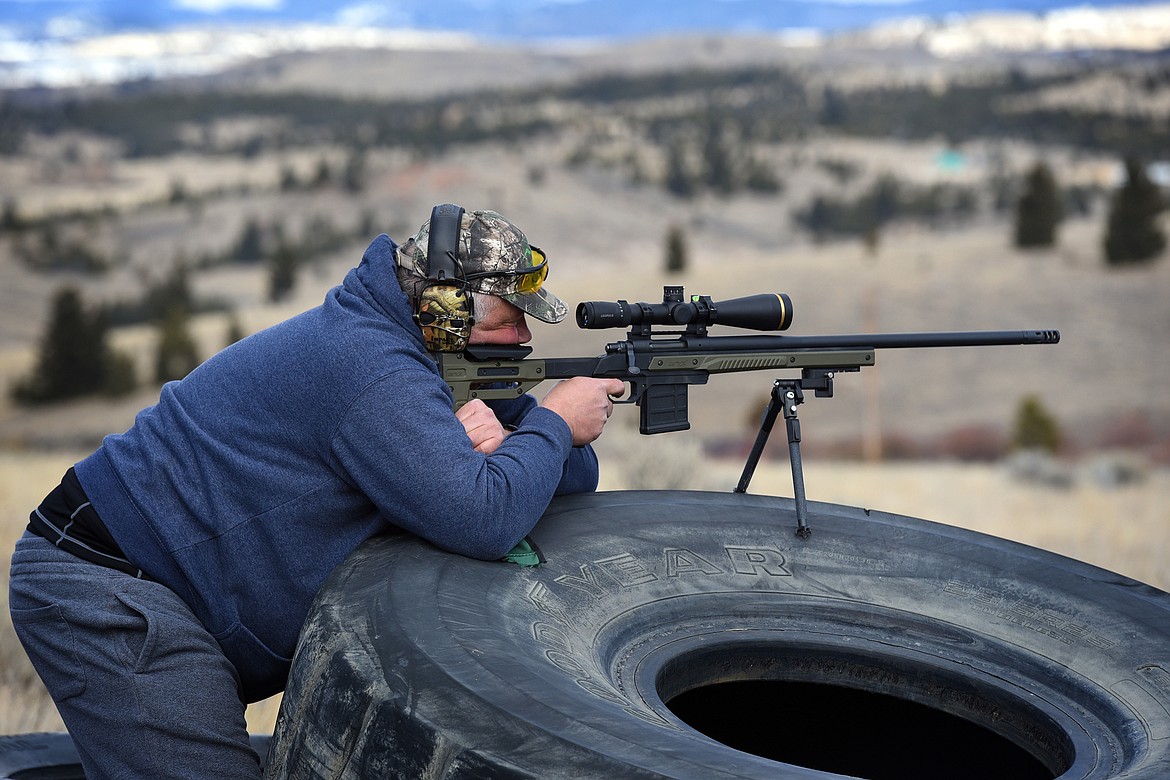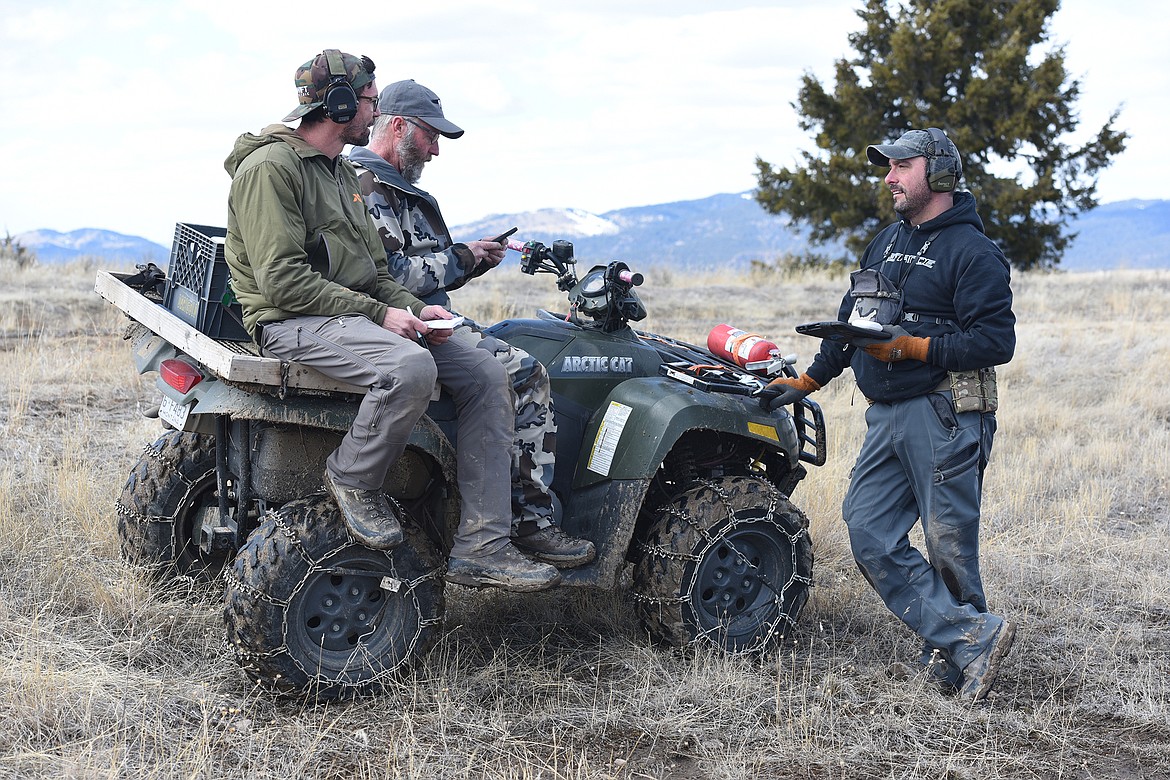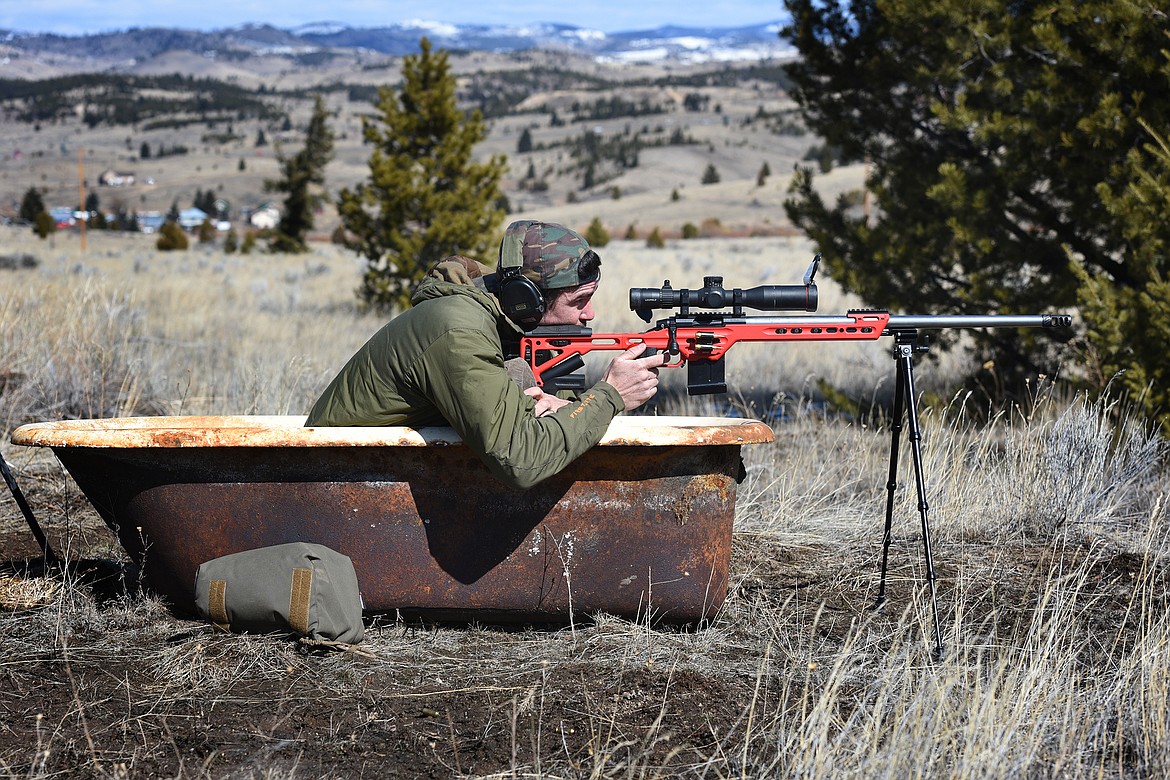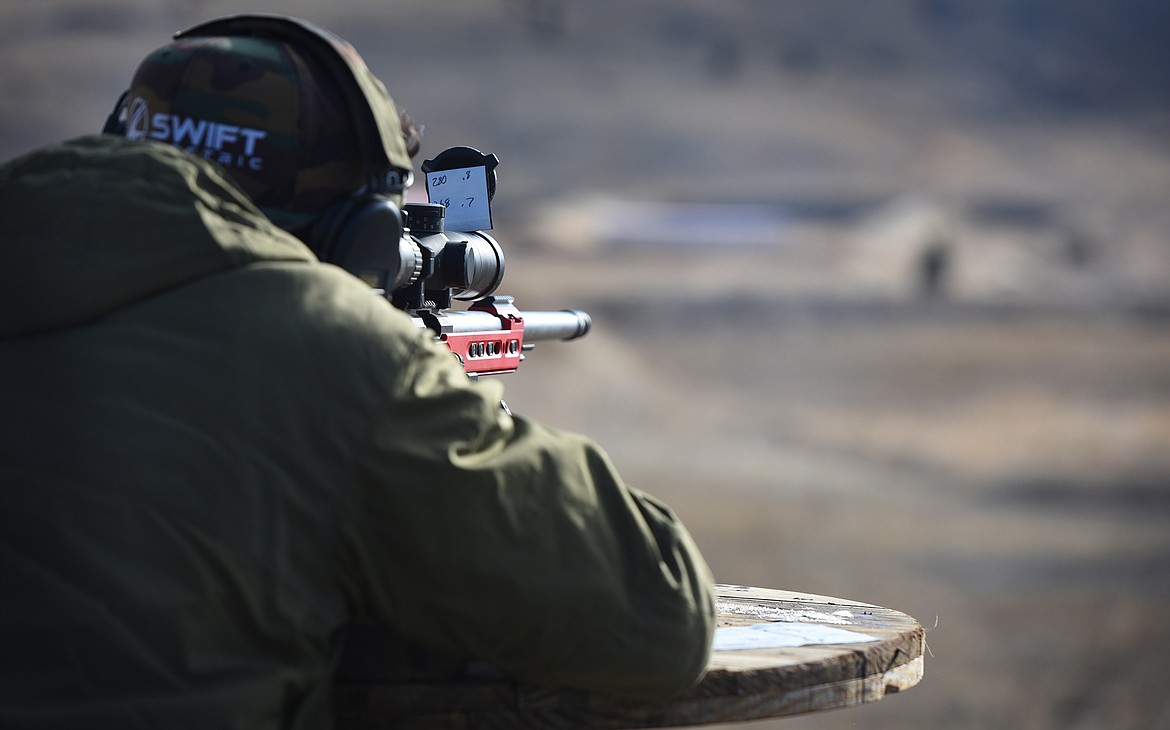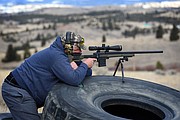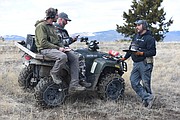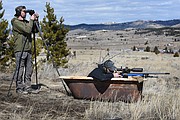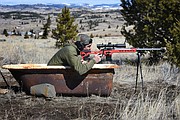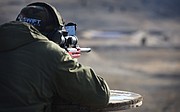Precision Rifle Series competitions put distance shooters to the test
A slight breeze cut through the crisp morning air at the Butte Gun Club as the shooters toted their rifles to the firing line. One by one, the competitors took their positions. At one stage, a man stepped into an old claw-foot bathtub and rested the front of his rifle on the metal rim. To his right, another shooter contemplated how to best support his rifle on a giant rubber tire while the shooter on the stage to his left took to his stomach on a rickety-looking raised wooden platform.
Welcome to the unorthodox world of Precision Rifle Series (PRS) style shooting.
For the next six hours, some of the best long-distance shooters in Montana took on not only each other, but also the changing winds and temperature, as well as the unusual shooting positions dreamed up by match director Mark Griffis.
While long-range competitions shot from unconventional positions began gaining popularity in the 1990s, the official PRS organization was founded in 2012 and set the rules for the sport that continues to grow in popularity in Montana, the United States and around the world. More official competitions can take place over two days, while local, club-level shoots like the Butte match are not quite as rigorous and are more geared toward those just getting into the sport.
In a typical match, shooters will encounter targets at distances from 100 yards out to as far as a mile or more that have to be engaged in a set amount of time with a limited number of rounds. Most stages involve shooting off of obstacles such as stumps, tires, scaffolding, fences or forcing the shooter to use their non-dominant hand. Targets range in size from about the size of a silver dollar to 18x24 inches and match directors are constantly looking for new ways to challenge and engage shooters, just as Griffis does in Butte.
“When I set up a stage, I am thinking about what would be fun for me, but I also want to keep it in line with what I have seen at other matches. I want the stages to be fun, but challenging at the same time. It has to be easy enough for a novice who has never shot a PRS match before, but still challenging for even the best of shooters,” Griffis said. “In theory, an excellent shooter could hit every target at each stage. In practice, it’s a lot harder than it looks. It’s a great sport that is accessible from novice shooters to pros.”
FOR GRIFFIS, the variability of the PRS courses drew him away from his years of shooting black powder silhouette matches in 2018 when his son turned him onto the PRS scene.
“Silhouette shooting is pretty static. You come to the line and shoot your five targets without moving. Then they set them up and you shoot them again. It’s shooting from the same position, just a different spot on the line. It was fun and I enjoyed it, but when I stumbled into PRS, I really liked the challenge of everything being different from stage to stage,” he said. “The stages change. The targets change. You have to shoot from a different position or over a different obstacle with different target ranges and angles. You can shoot the same course several times and have to face a new set of challenges every time.”
Griffis’ thoughts were echoed by Ronan shooter Darby Covey, who took 17th at the competition with Ruger M77 in 6.5 Creedmoor. A competition bench-rest shooter since the age of 4, Covey said he enjoyed the new challenge PRS presents.
“The variable stages really added a lot more difficulty than I am used to. It was a lot more interesting than the boring old bench matches or shooting everything from the prone position,” he said. “The PRS style adds another dimension that makes it a lot more fun.”
WHITEFISH SHOOTER Corey Harris said the PRS style is a way to keep his shooting skills honed throughout the year.
“For me, it is just something that I am really interested in that happens in the offseason when it is not hunting season. I probably won’t shoot in matches once hunting season begins, but PRS gives me something to do to stay sharp. I like the competition aspect of it as well as the science involved in it,” he said.
“There are a lot of people that are good shooters that can do well at this, but it takes someone who is dedicated to practicing and doing the math and science involved to really get to the top,” Harris said.
For Harris, the Butte match was also his first true PRS-style match. Using his new 6mm Creedmoor rifle built on a Defiance Arms action, Harris took ninth in Butte, illustrating the accessibility of the sport to those who have not shot a PRS match before.
Match winner Jared Miller of Bozeman got into PRS shooting after missing out on a trophy buck a few years back. While an experienced shooter at the time, he was not confident in taking a shot at the mule deer from 650 yards. Looking to improve his long-distance shooting skills over the winter, he came across the world of PRS.
“I started researching long-distance shooting over the winter and I got way too deep into it. The next season, I finally got my bull at 770 yards,” he said.
Now a die-hard PRS shooter, Miller said he shot five two-day matches and several club-level events last season.
FOR MILLER, and most PRS shooters, there is one sound that keeps them coming back out to the range.
“There is nothing quite like the sound of that bullet striking the steel target — it never gets old. That ring is the best sound in the world. It’s addicting,” he said. “It really blew me away at first, the time between the shot and the sound coming back on the really long shots. It really lets you know just how far away that target really is.”
While the PRS scene is gaining popularity in Montana, there are still only a relatively small number of competitions available each season. Ranges in Butte and Townsend hold club matches every month, but the state’s only official PRS match at LRC in Three Forks has been discontinued with the closing of the range there.
The TRM Ranch in Dupuyer is set to host the Big Medicine Precision Rifle Challenge June 18-20, if conditions permit. Covey is also hoping to start a new match series near Ronan soon.
While finding a match in Montana may take some driving, Griffis assured it is well worth the miles and is guaranteed to be a great time for shooters of all skill levels.
“This is a sport for anybody. I know it can be intimidating, but it is really just a lot of nice people who like to shoot and have fun,” he said. “Come out with what you have and I guarantee the people you shoot with will help you as much as they can with advice and tips.”
Reporter Jeremy Weber may be reached at 758-4446 or jweber@dailyinterlake.com.

